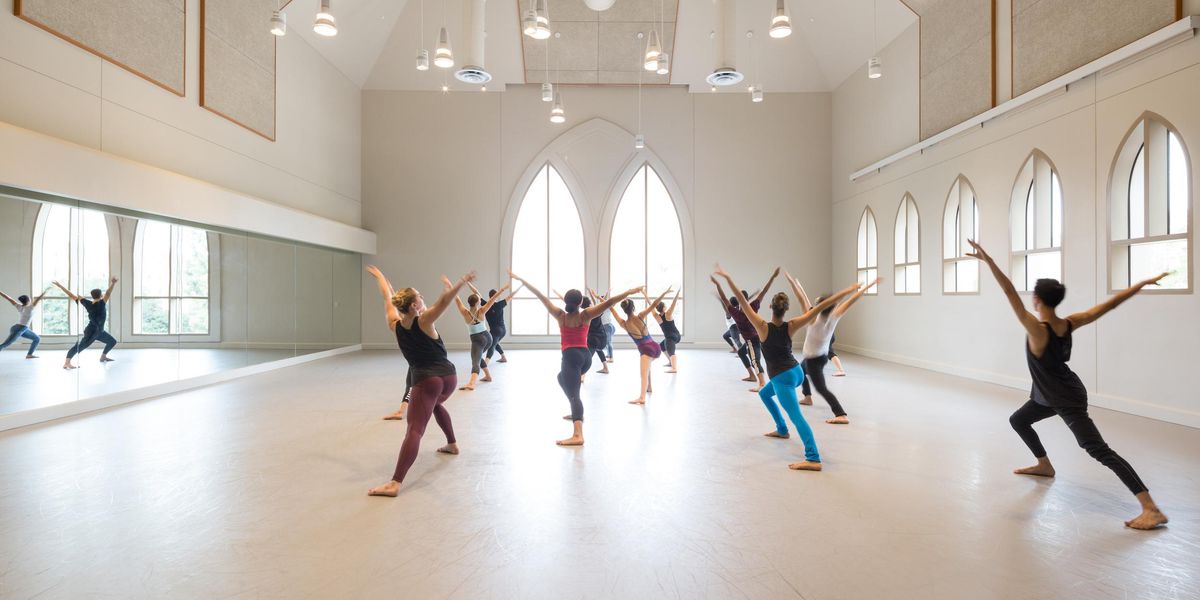How the New Music Video is Redefining "Backup Dance"
When it came out in 2014, few would have guessed Sia’s “Chandelier” had the makings of a viral video. There was just a single performer—not even Sia herself—on a small, modest set, with no flashy cuts or gimmicks. But it went viral anyway, its simple-yet-strange, entirely dance-focused concept captivating viewers and rendering dancer Maddie Ziegler a household name.
“It wasn’t premeditated—I didn’t expect it to be that huge and change the course of music videos,” says the video’s choreographer, Ryan Heffington. “But ‘Chandelier’ opened up a new world of possibilities in a big way.”
Although music videos have been reemerging as a popular form since the dawn of YouTube, something has shifted in recent years. Videos have become more artful, more purposeful. They make statements and tell nuanced stories. And often, they achieve this new level of artistry and popularity through dance. Not just any dance, though. The new music video is using sophisticated choreographic ideas usually reserved for the concert stage—and capturing the public’s attention because of it.
MTV’s move away from videos in the early 2000s made them a low priority for record labels and viewers alike. And at first, music videos didn’t thrive on YouTube when it launched in 2005.
But then, as Jon Caramanica wrote in a New York Times story about the resurgence of music videos, “innovations began happening at the smaller end, with independent artists, in an attempt to stand out, pushing the form more aggressively.” Music videos were reborn on the internet in the late 2000s—at the same time that dance was making its mark on popular culture with shows like “So You Think You Can Dance,” becoming more accessible to musical artists and their audiences alike.
“There’s more exposure to dance today, so people can actually comprehend what the alternatives are to just visual stimulation,” says Heffington. “That’s what videos used to hope to get out of dance: Five people doing the same thing. Very impressive, very visual. It works, we know it works, it’s worked for decades. Now it’s time for something else.”
Rather than taking brief, unrelated dance breaks, videos are now using dance as the through-line. “You can put contemporary dance or modern dance or even something really avant-garde with a mainstream pop song,” says Tyce Diorio, who choreographed Taylor Swift’s dance-filled “Shake It Off.”
Many artists—from Beyoncé to Florence + the Machine to FKA twigs—have begun hiring choreographers to try different approaches. Justin Bieber’s 2015 “Love Yourself” featured lyrical hip-hop duo Keone and Mari Madrid, who used their smooth, witty phrases to flesh out a complex relationship going south. And in Bieber’s “Life Is Worth Living,” up-and-coming contemporary star Emma Portner choreographed and performed a gesturally intricate, emotionally fraught duet in an empty dance studio.
Blood Orange took this pure-dance concept even further—his 2016 “I Know,” featuring ballet star Maria Kochetkova, seems to take us within the making of the video, positioning dance not just as the storytelling device but as the subject.
As the purpose of music videos shifts away from selling albums—a goal that has become less relevant in the age of Spotify and Apple Music—most labels are spending less money on them. That frees the creative team to take risks. “Now, for choreographers and directors, it’s a space to play and find their creative voice more so than creating these huge, million-dollar videos that go directly to MTV,” says Celia Rowlson-Hall, who has choreographed videos for artists like MGMT, Chromeo and Alicia Keys. “Making things a little less precious has definitely opened up the creative outlet.”
Even big-name concert dance choreographers are using music videos as a place to experiment: Wayne McGregor’s work on The Chemical Brothers’ “Wide Open” video gradually turned a ballet dancer see-through by using motion-capture technology and 3-D animation. His choreography for Radiohead’s iconic “Lotus Flower” consists of animalistic-meets-pedestrian grooves, shakes and thrashes.
The pressure to immediately capture viewers’ attention has also diminished. Now, instead of trying to prevent audiences from changing the channel, videos aim to stand out among the internet’s endless content. YouTube—where most music videos live—forces viewers to make more intentional choices about what they watch, and allows them to rewatch countless times on demand.
The ultimate goal now is to make a viral-worthy video, one that merits conversation rather than just viewing. This pushes artists and labels to think conceptually and to develop big, exciting ideas—think OK Go’s treadmill dances or Drake’s meme-able “Hotline Bling” moves. Longer, more challenging videos can eventually pay off in hype—as measured through clicks, views and social media shares (which labels profit from).
Yet as much creative energy as artists are investing, the way we watch videos today also leads to frustrations. A hit video is often one that can be easily broken up into shareable clips or even GIFs, so choreography gets chopped up and condensed. And although dance in music videos has become more nuanced, the screens on which we often view it have become smaller and less apt to capture those nuances. “You work so many long hours on a video, and then everyone goes and watches it on their cell phone,” says JaQuel Knight, who co-choreographed Beyoncé’s “Single Ladies” and worked on her visual album Lemonade.
But each time artists use dance to expose their audiences to something new, more possibilities for movement’s role in music videos emerge. “Maybe there’s something else that’ll come out that’ll influence a decade,” says Heffington. “That’s exciting. It’s so unpredictable, and that’s beautiful.”




